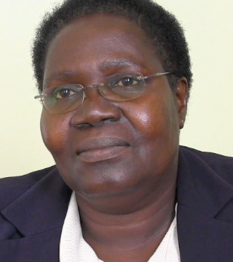Today, in the lead up to International Women’s Day on 8th March, Farming First captures the voice of a female smallholder farmer who highlights the challenges still faced by women each day as they strive to provide nutritious food for their families in Uganda. Rose Akaki rears cattle for beef and grows maize, both of which she sells to local schools to feed the children. She has recently started to keep bees.
How much of the land do women in Uganda own?
About 80% of farmers in Uganda are women, producing 60% of food but they only own 1% of land they use for farming; a meagre percentage. The rest of the land is under the control of men, as land ownership in Uganda is a preserve of men. So, what is planted on such land is dictated by them. They decide which crops can be planted. For instance, a man can decide to use the land to grow cash crops like tobacco or sugar cane that fetch a higher price at the market, and yet these crops are not food crops. This implies that the size of land that women use for agriculture is very limited, and whatever is produced from such land is limited to household consumption. Furthermore, this land is overused and has low fertility.
Is there any technology to help women boost yields?
Ox ploughs are starting to come in, but most women still use a hand hoe. This means farming is very labour intensive. A lot of the work is done by women, who also have many other care giving tasks to complete. So we really need technology to reduce the time and energy a woman spends on the farm so that she can do other things and grow more food to feed her family. We are a long way off from having tractors – there are a few privately owned tractors but a rural woman farmer will not have the money to hire them.
Do any extension services reach your community?
Extension services do exist but you have to pay for them. If I need a vet to look at my cows, then I have to pay for his transport, expertise and the drugs he will recommend, and then feed the person when they visit my house, it is quite discouraging for a smallholder farmer.
Are women able to sell surplus crops?
People can sell what they want but peak season is a problem. Everyone has the same product so the price gets lower. We need effective storage systems so we can get a better price for our crops later in the year. This also calls for getting organised in groups.
Do women have access to finance?
This is a big challenge. The Government of Uganda has encouraged people to go into microfinance, but loans come with demands. A rural women farmer who only owns a tiny amount of land may not have the collateral to put down as security. What our farmers’ organisation has done to address this is to encourage women to form groups, called Savings and Co-operative Societies in villages. Every week women are encouraged to put something in a saving box, this accumulates and you are then able to borrow from that box to cater for your farm and family needs.
What recommendations would you make to policymakers?
More money could be spent on agriculture. In Uganda, agriculture is the backbone of the economy and more money would do a lot of good in the sector. Also, smallholder farmers, especially women rural farmers, should be part of the policy making process, so they can articulate the issues that concern them. Sometimes policies are made for us and we don’t get the benefits.
The government is already doing a lot to ensure sustained agricultural production, but implementation of the policies is often a problem. There are many good policies on land rights, ownership and modernisation of agriculture. I call upon our farmer organisations to monitor the implementation of such policies so that the smallholder farmer can benefit and government can see the value of their investments.
What is your final message as a female farmer on International Women’s Day?
Rural women farmers produce most of the food to feed the family. These women should be empowered to improve their productivity, by giving them access to land, better tools to till the land, seeds and agrochemicals, access to financial services to improve their farm practices, information on weather, but also affordable agricultural extension services. Then, women can produce more food for the growing population.



